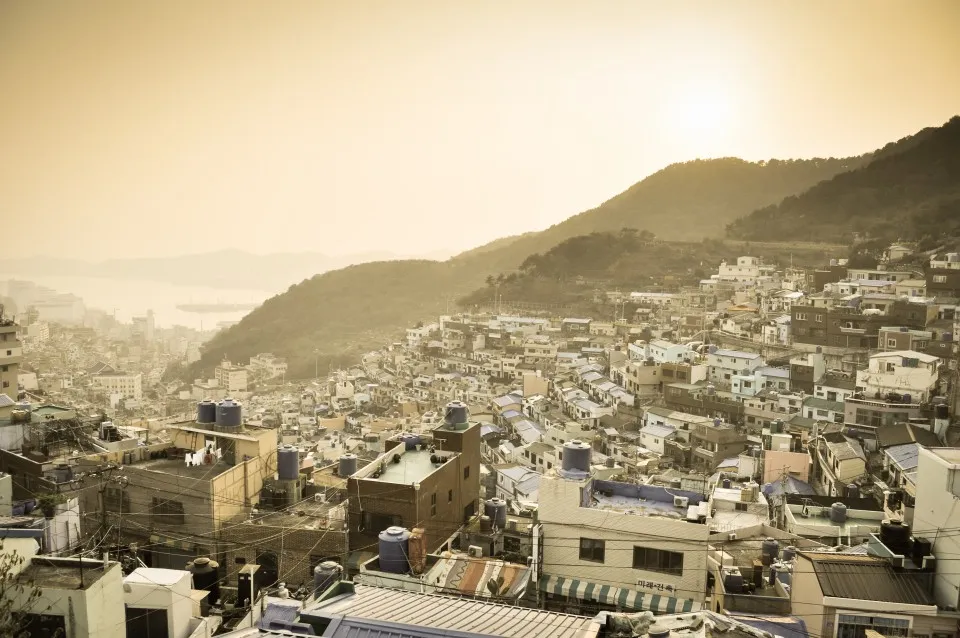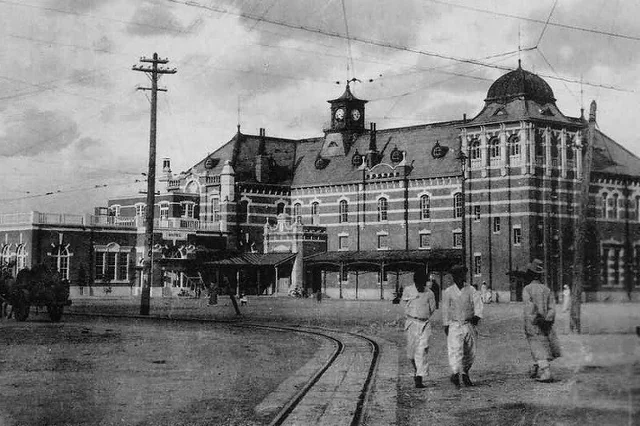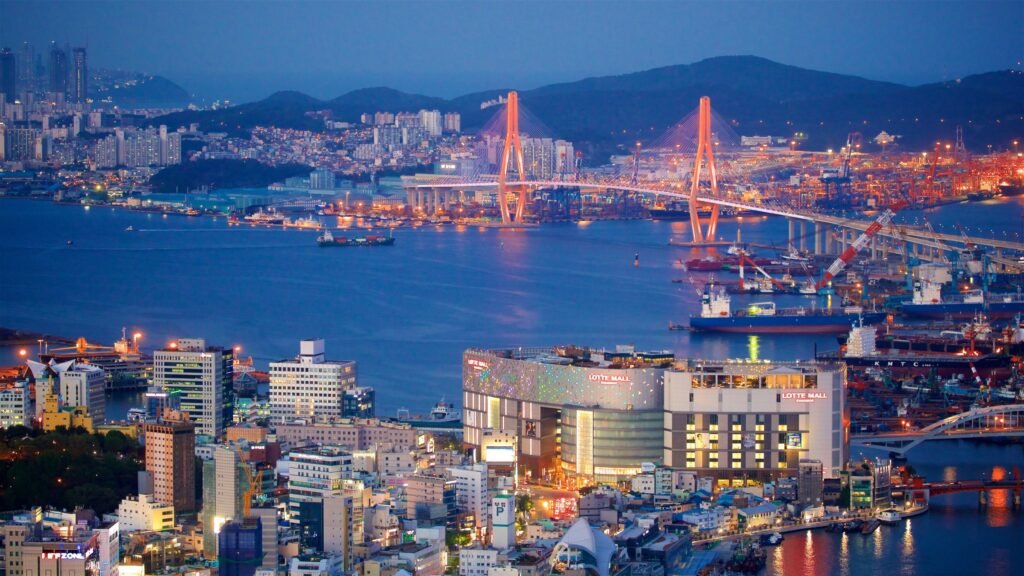Busan Then and Now
Busan Then
Busan, a vibrant metropolitan city and major port in South Korea, lies on the southeastern tip of the Korean Peninsula.
Renowned for its beautiful coastal scenery and bustling port, Busan has a rich history and cultural significance. Its name, “Busan,” is the Revised Romanization of the city’s Korean name, a system that has been in use since the late 15th century.
In 2000, “Busan” officially replaced the earlier McCune–Reischauer romanization, “Pusan,” in efforts to unify and modernize Korean romanization standards.
During the Japanese colonial period (1910-1945), the city’s name was pronounced as “Fuzan” in Japanese, reflecting Japan’s influence on Korean territories at that time.
Today, Busan is celebrated for its beaches, international film festival, and role as a gateway for maritime trade.

Busan History
Busan’s history stretches back thousands of years, with archaeological evidence showing that the area was inhabited during the Neolithic period.
Discoveries along the coast, such as stone tools, pottery, and animal bones, indicate that fishing was the main food source for early inhabitants.
By the Bronze Age, people had moved further inland and begun practicing agriculture.
Related Article: Taipei Then and Now
Around the first century, a chiefdom called Koch’ilsan-guk existed in what is now Dongnae District.
This area was later absorbed by the Silla kingdom, becoming an administrative division known as Dongnae, a name it still carries today.
Throughout the Goryeo period (918–1392), Dongnae gained political importance, and its natural hot springs became famous, and referenced in historical writings.
Related Article: Ho Chi Minh City Then and Now

However, it faced repeated attacks from Japanese pirates, or wokou, which led to the construction of defensive fortresses such as Dongnaeeupseong.
In 1423, Busan became an important port with a Japanese concession community or wigwam.
During the 1592–1598 Japanese invasions of Korea, local fortresses and volunteer militias defended Busan, though many civilians suffered during the conflict.
Related Article: Manila Then and Now
Following the war, diplomatic relations were reestablished, and the city began to rebuild.
In the late 19th century, Busan underwent rapid modernization. Under the 1876 Treaty of Ganghwa, it became Korea’s first international port, attracting consulates from Japan, Qing China, and the United Kingdom.
In 1908, it was connected to the Gyeongbu railway line, facilitating trade across Korea and linking it to other nations.
Related Article: Jakarta Then and Now
During Japanese colonial rule (1910–1945), Busan expanded into a trading hub, connecting to Japan by ferry and supporting tram services.
The Korean War (1950–1953) had a profound impact on Busan. It became one of only two cities not captured by North Korean forces, serving as a refuge for hundreds of thousands of Koreans.
This influx of people made Busan a temporary capital of South Korea, with United Nations forces establishing the defensive “Pusan Perimeter” around the city. The war’s aftermath further solidified Busan as a key metropolitan area in the country.
Related Article: Guangzhou Then and Now
In 1963, Busan gained status as South Korea’s first Directly Governed City, and by 1983, Gyeongsangnam-do’s provincial capital moved to Changwon.
Over the decades, the port city continued to expand, with new industrial parks, shipbuilding facilities, and a container port opening in 2006 on Gadeok Island to support increased international trade.
Related Article: Shenzhen Then and Now
Today, Busan is a hub for high-tech industries and tourism, featuring attractions like Haeundae Beach, Beomeo Temple, and the renowned Busan International Film Festival.
Its legacy as a significant historical and economic center is also supported by a robust transportation system, which includes express buses, a subway, and Gimhae International Airport.
Related Article: Beijing Then and Now
Busan Now

Busan, officially known as Busan Metropolitan City, is South Korea’s second-largest city after Seoul, with a population exceeding 3.3 million people as of 2024.
It plays a vital role in the nation’s economy, culture, and education, making it a central hub for the southeastern region of South Korea.
The city is home to Busan Port, which is not only the busiest port in South Korea but also ranks as the sixth-busiest container port globally.
Related Article: Mumbai Then and Now
The surrounding Southeastern Maritime Industrial Region, which includes cities like Ulsan and Daegu, is the largest industrial zone in the country, contributing significantly to South Korea’s economic output.
The city itself is divided into 15 districts and a county, with a total population of around 3.6 million people.
However, when including the larger metropolitan area, known as the Southeastern Maritime Industrial Region, the population rises to approximately 8 million.
Related Article: Kuala Lumpur Then and Now
Geographically, Busan is characterized by its narrow valleys between the Nakdong and Suyeong Rivers, with mountains acting as natural boundaries between the districts.
This topography has influenced the city’s urban development, leading to dense population centers along the riverbanks.
Additionally, Busan is home to Haeundae Beach, the largest in the country, which adds to the city’s appeal as both an industrial powerhouse and a major tourist destination.
Related Article: Bangkok Then and Now
As a metropolitan city, Busan holds administrative status that places it on equal footing with provinces.
This direct control by the central government allows for more autonomy in managing the city’s affairs.
The city is a prominent example of a Large metropolis, with the Southampton System of Port-City classification recognizing its significant role in both global trade and urban development.
Busan’s continued growth as an economic and cultural center reflects its strategic importance to South Korea, not just as a port city but also as a key player in the nation’s industrial and technological landscape.
Related Article: Seoul Then and Now
FAQs
Busan is famous for being South Korea’s largest port city, with the world’s sixth-busiest container port. It is also known for its beautiful beaches, including Haeundae Beach, rich cultural sites, and the Busan International Film Festival, one of Asia’s top film events.
While English is not widely spoken by everyone in Busan, it is commonly understood in tourist areas, hotels, and international businesses. Younger people and those working in tourism are more likely to speak English.
The distance between Seoul and Busan is approximately 325 kilometers (202 miles). It takes about 2.5 to 3 hours by high-speed KTX train or around 4-5 hours by car or bus.
Yes, Busan is South Korea’s second-largest city by population, with over 3.3 million people. It is an important cultural, economic, and industrial hub, known for its port and vibrant urban life.






























